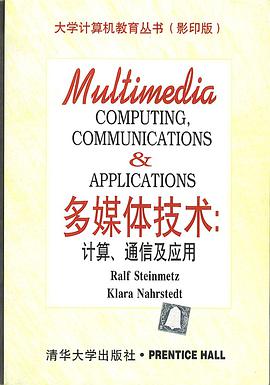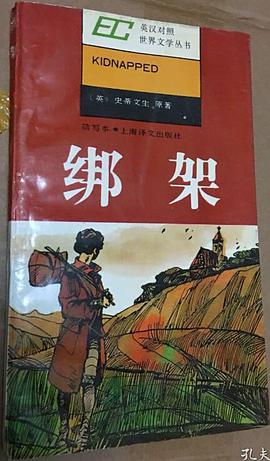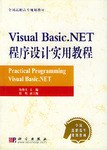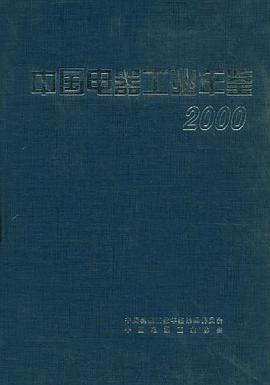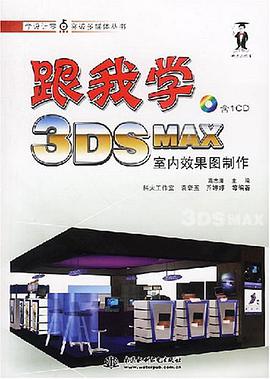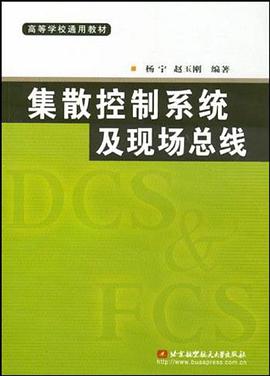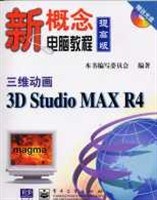Contents
Foreword
Preface
1 Introduction
1.1 Branch-overiapping Aspects of Multimedia
1.2 Content
1.3 Global Structure
1.4 Multimedia Literature
2 Multimedia: Media and Data Streams
2.1 Medium
2.1.1 The Perception Medium
2.1.2 The Representation Medium
2.1.3 The Presentation Medium
2.1.4 The Storage Medium
2.1.5 The Transmission Medium
2.1.6 The Information Exchange Medium
2.1.7 Representation Values and Representation Spaces
2.1.8 Representation Dimensions
2.2 Main Properties of a Multimedia System
2.2.1 Multimedia System Definition
2.2.2 Combination of Media
2.2.3 Independence
2.2.4 Computer-supported Integration
2.2.5 Communication Systems
2.3 Multimedia
2.4 Traditional Data Streams Characteristics
2.4.1 Asynchronous Transmission Mode
2.4.2 Synchronous Transmission Mode
2.4.3 Isochronous Transmission Mode
2.5 Data Stream Characteristics for Continuous Media
2.5.1 The Time Interval Between a Complete Transmission of Con-
secutive Packets
2.5.2 Variation of Consecutive Packet Amount
2.5.3 Contiguous Packets
2.6 Information Units
3 Sound / Audio
3.1 Basic Sound Concepts
3.1.1 Computer Representation ofSound
3.1.2 Audio Formats
3.2 Music
3.2.1 MIDI Basic Concepts
3.2.2 MIDI Devices
3.2.3 MIDI Messages
3.2.4 MIDI and SMPTE Timing Standards
3.2.5 MIDI Software
3.3 Speech
3.3.1 Speech Generation
3.3.2 Speech Analysis
3.3.3 Speech Transmission
4 Images and Graphics
4.1 Basic Concepts
4.1.1 Digital Image Representation
4.1.2 Image Format
4.1.3 Graphics Format
4.2 Computer Image Processing
4.2.1 Image Synthesis
4.2.2 Image Analysis
4.2.3 Image Transmission
4.3 Comments
5 Video and Animation
5.1 Basic Concepts
5.1.1 Video Signal Representation
5.1.2 Computer Video Format
5.2 Television
5.2.1 Conventional Systems
5.2.2 Enhanced Definition Systems
5.2.3 High-Definition Systems
5.2.4 Transmission
5.3 Computer-based Animation
5.3.1 Basic Concepts
5.3.2 Animation Languages
5.3.3 Methods of Controlling Animation
5.3.4 Display of Animation
5.3.5 Transmission of Animation
5.3.6 Comments
6 Data Compression
6.1 Storage Space
6.2 Coding Requirements
6.3 Source, Entropy and Hybrid Coding
6.4 Some Basic Compression Techniques
6.5 JPEG
6.5.1 Image Preparation
6.5.2 Lossy Sequential DCT-based Mode
6.5.3 Expanded Lossy DCT-based Mode
6.5.4 Lossless Mode
6.5.5 Hierarchical Mode
6.6 H.261 (px64)
6.6.1 Image Preparation
6.6.2 Coding Algorithms
6.6.3 Data Stream
6.7 MPEG
6.7.1 Video Encoding
6.7.2 Audio Encoding
6.7.3 Data Stream
6.7.4 MPEG-2
6.7.5 MPEG-4
6.8 DVI
6.8.1 Audio and Still Image Encoding
6.8.2 Video Encoding
6.8.3 Data Stream
6.9 Comments
7 Optical Storage Media
7.1 History
7.2 Basic Technology
7.3 Video Disks and Other WORMs
7.4 Compact Disk Digital Audio
7.4.1 Preliiminary Technical Background
7.4.2 Eight-to-Fourteen Modulation
7.4.3 Error Handling
7.4.4 Frames, Tracks, Areas and Blocks of a CD-DA
7.4.5 Advantages of Digital CD-DA Technology
7.5 Compact Disk Read Only Memory
7.5.1 Blocks
7.5.2 Modes
7.5.3 Logical Data Format
7.5.4 Limitations of the CD-ROM Technology
7.6 CD-ROM Extended Architecture
7.6.1 Form 1 and Form 2
7.6.2 Compressed Data of Different Media
7.7 Further CD-ROM-based Developments
7.7.1 Compact Disk Interactive
7.7.2 Compact Disk Interactive Ready Format
7.7.3 Compact Disk Bridge Disk
7.7.4 Photo Compact Disk
7.7.5 Digital Video Interactive
7.8 Compact Disk Write Once
7.8.1 Principle of the CD-WO
7.8.2 Sessions
7.9 Compact Disk Magneto Optical
7.9.1 Principle ofthe Magnetic-Optical Method
7.9.2 Areas of the CD-MO
7.10 The Prospects ofCD Technologies
8 Computer Technology
8.1 Communication Architecture
8.1.1 Hybrid Systems
8.1.2 Digital Systems
8.2 Multimedia Workstation
8.3 Comments
9 Multimedia Operating Systems
9.1 Introduction
9.2 Real Time
9.2.1 The Notion of "Real-Time"
9.2.2 Real Time and Multimedia
9.3 Resource Management
9.3.1 Resources
9.3.2 Requirements
9.3.3 Components and Phases
9.3.4 Allocation Scheme
9.3.5 Continuous Media Resource Model
9.4 Process Management
9.4.1 Real Time Process Management in Conventional Operating
Systems: An Example
9.4.2 Real-time Processing Requirements
9.4.3 Traditional Real-time Scheduling
9.4.4 Real-time Scheduling: System Model
9.4.5 Earliest Deadline First Algorithm
9.4.6 Rate Monotonic Algorithm
9.4.7 EDF and Rate Monotonic: Context switches
9.4.8 EDF and Rate Monotonic: Processor Utilizations
9.4.9 Extensions to Rate Monotonic Scheduling
9.4.10 Other Approaches for In-Time Scheduling
9.4.11 Preemptive versus Non-preemptive Task Scheduling
9.4.12 Scheduling of Continuous Media Tasks: Prototype Operating
Systems
9.5 File Systems
9.5.1 Traditional File Systems
9.5.2 Multimedia File Systems
9.6 Additional Operating System Issues
9.6.1 Interprocess Communication and Synchronization
9.6.2 Memory Management
9.6.3 Device Management
9.7 System Architecture
9.7.1 UNIX-based Systems
9.7.2 QuickTime
9.7.3 Windows Multimedia Extensions
9.7.4 OS/2 Multimedia Presentation Manager/2
9.8 Concluding Remarks
10 Networking Systems
10.1 Layers, Protocols and Services
10.2 Networks
10.3 Local Area Networks (LANs)
10.3.1 High-speed Etheraet
10.3.2 Token Ring
10.3.3 FDDI
10.3.4 Local ATM Networks
10.4 Metropolitan Area Networks (MANs)
10.4.1 Distributed Queue Dual Bus (DQDB)
10.4.2 Orwell
10.4.3 MAN Connectivity to ATM Networks
10.5 Wide Area Networks (WANs)
10.5.1 Traditional WAN's
10.5.2 B-ISDN: ATM
10.6 Conclusion
11 Multimedia Communication Systems
11.1 Application Subsystem
11.1.1 Collaborative Computing
11.1.2 Session Management
11.2 Transport Subsystem
11.2.1 Rcquirements
11.2.2 Transport Layer
11.2.3 Network Layer
11.3 Quality ofService and Resource Management
11.3.1 Basic Concepts
11.3.2 Establishment and Closing ofthe Multimedia Call
11.3.3 Managing Resources during Multimedia Transmission
11.3.4 Architectural Issues
11.4 Comments
11.4.1 Trends in Collaborative Computing
11.4.2 Trends in Transport Systems
12 Database Systems
12.1 Multimedia Database Management System
12.2 Characteristics ofan MDBMS
12.3 DataAnalysis
12.4 Data Structure
12.4.1 Raw Data
12.4.2 Registering Data
12.4.3 Descriptive Data
12.4.4 Examples of Multimedia Structures
12.4.5 Comments on Data Analysis
12.5 Operations on Data
12.6 Integration in a Database Model
12.6.1 Relational Database Model
12.6.2 Object-oriented Database Model
12.7 Comments
13 Documents, Hypertext and MHEG
13.1 Documents
13.1.1 Document Architecture
13.1.2 Manipulation of Multimedia Data
13.2 Hypertext and Hypennedia
13.2.1 Hypertext, Hypermedia and Multimedia
13.2.2 Hypermedia Systems: An Example
13.2.3 History
13.2.4 Systems: Architecture, Nodes and Pointers
13.2.5 Some Final Comments about Hypertext Systems
13.3 Document Architecture SGML
13.3.1 Some Details
13.3.2 SGML and Multimedia
18 Future Directions
18.1 Where Are We Today?
18.1.1 User Interface
18.1.2 Operating Systems
18.1.3 Multimedia Documents
18.1.4 Synchronization
18.1.5 Programming
18.2 What Are the Next Steps?
18.2.1 Devices
18.2.2 Visualization
18.2.3 Mobility
18.2.4 Interactivity
18.2.5 Operating Systems
18.2.6 Further Issues in Virtual Environments
18.2.7 Multimedia User Interface
18.2.8 Hypennedia
18.2.9 Multimedia Applications
18.3 What Are the Multimedia Research Issues?
A Abbreviations
Bibliography
Index
· · · · · · (
收起)
